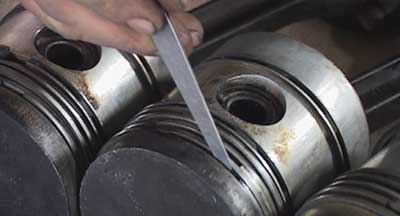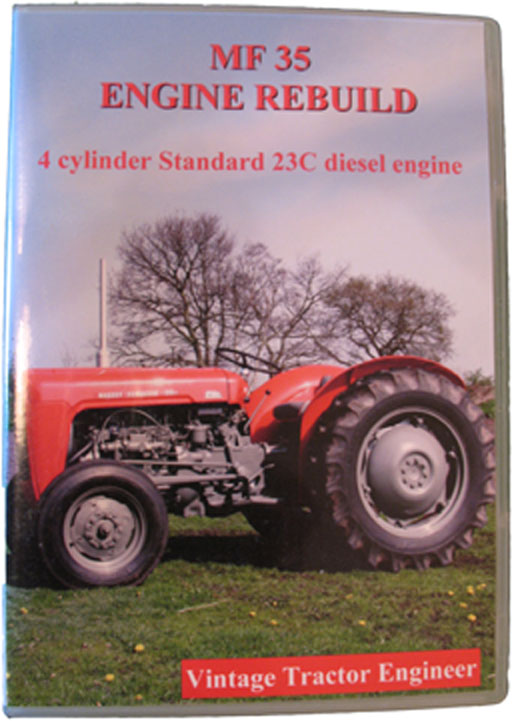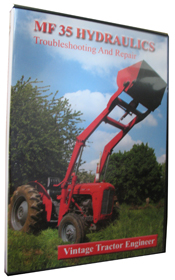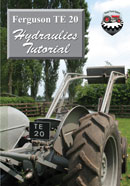Want to check out our tractor maintenance videos? Click here to see what we've got!
Vintage Tractor Engineer has owned this K150 trencher for two and a half years now and so we have finally got round to uploading a video of the machine in work.
We layed some pipe last year under one of our wettest fields and the results have been fantastic. The early summer of 2012 has been one of the wettest on record in the UK and the crop of spring barley would normally have been flooded off under such heavy rainfall. The drainage work has prevented the waterlogging and the crop yielded in excess of 3 tonnes to the acre, so within one season the work has paid for itself.
Whilst the machine was in that particular field we also drove over to the neighbours to put a couple of pipes in and they have also seen good results.
2012
So this year we planned to drain three more small fields. Unfortunately the summer hasn’t been kind and harvest has been late so one of the fields will get left to another year. We have, however, got started in one of the fields (sorry for the poor video, I was trying to take the video at the same time as looking after the pipe/machine)…
When the video was taken we were going through a bit of a hill top so the machine was digging about 120cm deep. We could have gone at a faster forward speed, but the depth control is currently manual to follow the laser. The laser receiver and control box can be piped into the machine’s hydraulics for fully automatic control, but we have had a few problems with that and so are using it manually. The control box gives pulses to the hydraulic valve (either up or down) when in auto mode, but the up pulses were not of a long enough time for the hydraulics to actually raise the pipe box. The auto control worked fine in a downward direction. We intend to put a time delay into this so that the pulses to the hydraulic valve are for a longer period of time, hence allowing the hydraulics time to operate.
When we got towards the end of this run we hit something underground, either a stone or possibly a bog oak. When we completed the run and lifted out at the end the wearing part at the bottom of the pipe box had been ripped partly off and was all bent back (there is like a share at the bottom of the pipe box which ploughs a nice neat furrow in the bottom of the trench for the pipe to lay into). We need to repair this before we can do any more.
We got the first 100m of pipe layed and then the laser/tripod was hit by a gust of wind and it stopped (automatically because it had been wobbled). I went back to the laser (which was near the ditch) and there was already water running out of the new pipe.
We normally like to have a fall of 25mm in 20m, but this field was very low lying and so we could only put 12mm in 20m to maintain soil cover above the pipe. The gradient (in this case 0.06%) is just typed into the laser and it sets itself – which is a great function.
As you will have seen from the video, the spider (that uncoils the pipe) is a little stiff and needed some lubrication as the pipe wasn’t unrolling freely. Otherwise everything went well and the field is already drying up. The grass will be ploughed out and wheat drilled into that field later in the autumn (the English weather permitting!!).






Hi
I am intested to read all the comments on landrainage,
Many years ago I drove a Bruff TG4, then later a Buff TG5 for C F Rawlinson Ltd of Burgh le Marsh, and of course I didn’t keep any photos, has anyone got any of these machines or indeed any interesting drainage photos.
I also spent 3 years at Rycotewood college (Thame) doing agricultural engineering and would like to hear from anyone with connections to drainage or the college.
Malc
Hi Chris/Ray,
Nice to hear from you both. After having a couple of emails between VTE and Chris/Ray we have been provided with all sorts of interesting tips and techniques to do a good job. Here are the websites for Chris and Ray…
http://www.collyerdrainage.co.uk/index.htm
http://www.raydarley.co.uk/
Hi Steve , Ive just seen your K150 working on the net looks like you are getting the hang of draining ive been draining now 33 years and we used to own a K150 but i didnt like it as much as the K140 of which ive got one in my shed mainly because it dont like digging much fleeter than 26″ which at times you need , Must say that though i still think Barth drainers take some beating as they are a robust machine and easily repaired we are drainage contractors in suffolk and are running a Barth Townsend K141 and Mastenbroek mostly but have the K140 out now and again all are on lazer and the Mastenbroek is also on GPS for surveying, grading and mapping but good to see you on you tube wish there was more draining from this country on there regard Chris
Nice to see your trencher working, great job! I have a similar 1980s Bruff BT3 machine I bought to do our own drainage. I have the laser receiver working the trencher hydraulics. It works well and does a good job. There are some pics on my website if your interested.
Regards Ray.
Wow that’s some machine and you have all the rain and we have hardly any, but that’s life.